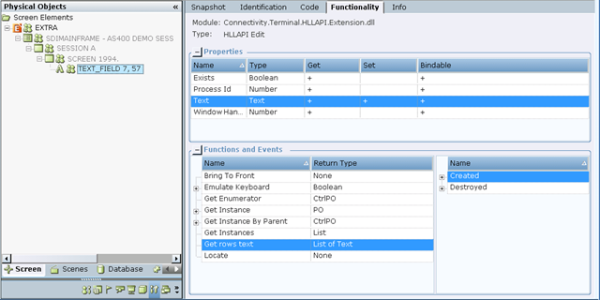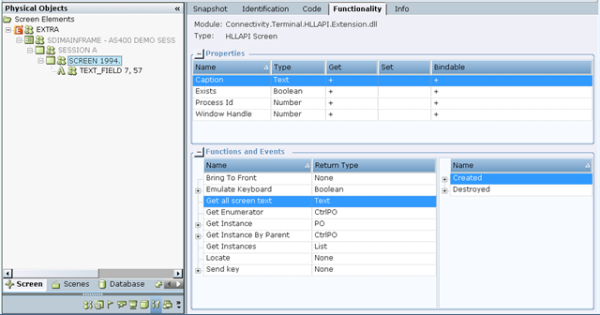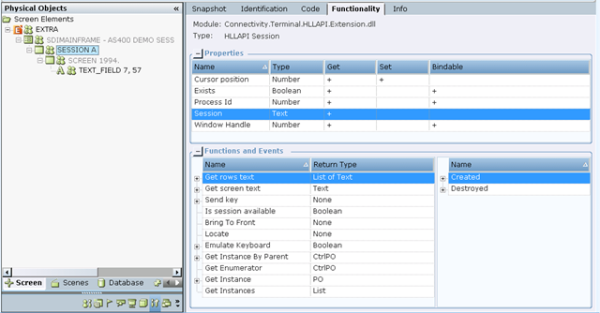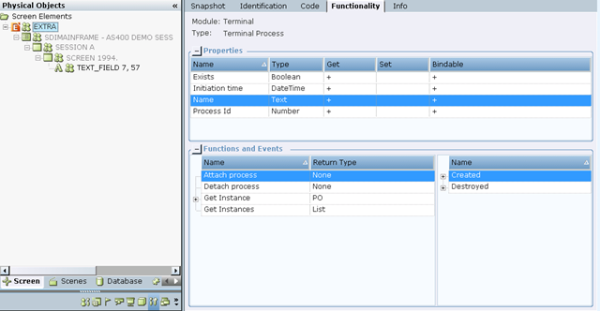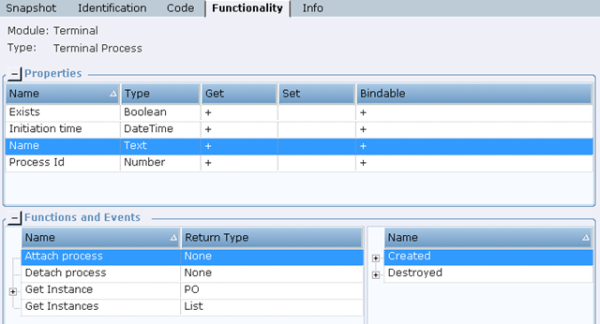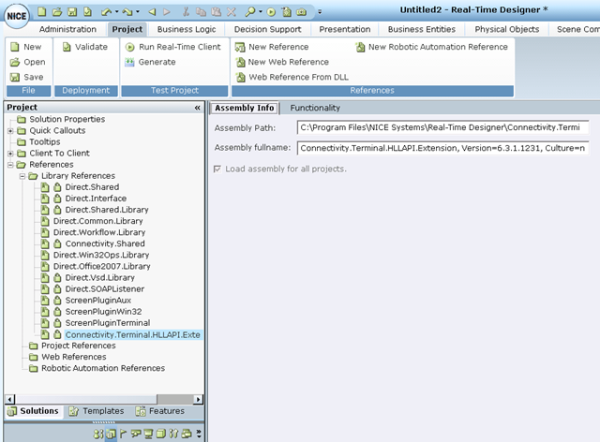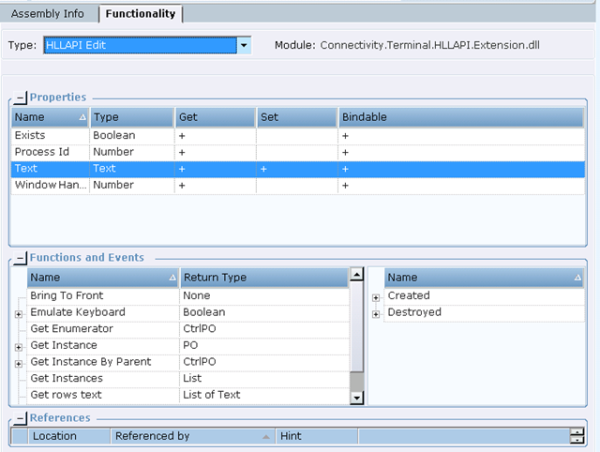HLLAPI screen elements have their own properties, functions, and events. To view this functionality, navigate to the Functionality tab or find it in the Connectivity.Terminal.HLLAPI.Extension.dll library on the Project tab in the Real-Time Designer.
To select any level of an HLLAPI screen element in the Screen elements tree, you need to display hidden captures. See Capturing an HLLAPI Screen Element.
To view the functionality of HLLAPI Edit screen element:
In the Screen Elements tree, select a captured HLLAPI Edit screen element and click the Functionality tab. This tab shows a functionality view of the selected screen element. For details, see Functionality Tab
The Properties table lists the properties of a HLLAPI Edit screen element:
Exists
Process Id
Text
Window Handle
A + sign indicates the methods (Get, Set, or Bindable) applicable for each property, if set. For details about property methods, see Using the Functionality Tab.
The Functions and Eventstable is divided into two sections:
The Functions table lists the functions of the HLLAPI Editscreen element:
Bring To Front
Emulate Keyboard
Get Enumerator
Get Instance By Parent
Get Instances
Get rows text
Locate
The Events table lists t HLLAPI Editscreen element events:
Created
Destroyed
To view the functionality of a HLLAPI Screen screen element:
In the Screen Elements tree, select the HLLAPI Screen screen element and click the Functionality tab. This tab shows a functionality view of the selected screen element (for details, see Functionality Tab).
The Properties table lists the properties of HLLAPI Screen screen element:
Exists
Process Id
Text
Window Handle
A + sign indicates the methods (Get, Set, or Bindable) applicable for each property, if set. For details about property methods, see Using the Functionality Tab.
The Functions and Eventstable is divided into two sections:
The Functions table lists the functions of the HLLAPI Screen screen element:
Bring To Front
Emulate Keyboard
Get all screen text
Get Enumerator
Get Instance By Parent
Get Instances
Locate
Send key
The Events table lists the HLLAPI Edit screen element events:
Created
Destroyed
To view the functionality of HLLAPI Session screen element:
In the Screen Elements tree, select HLLAPI Session screen element and click the Functionality tab. This tab shows a functionality view of the selected screen element (for details, see Functionality Tab).
The Properties table lists the properties for HLLAPI Session screen elements.
Cursor position
Exists
Process Id
Session
Window Handle
A + sign indicates the methods (Get, Set, or Bindable) applicable for each property, if set. For details about property methods, see Using the Functionality Tab.
The Functions and Eventstable is divided into two sections:
The Functions table lists the functions of the HLLAPI Sessionscreen element:
Bring To Front
Emulate Keyboard
Get Enumerator
Get Instance By Parent
Get Instances
Get rows text
Get screen text
Is session available
Locate
Send key
The Events table lists the HLLAPI Sessionscreen element events:
Created
Destroyed
To view the functionality of Terminal Process screen element:
In the Screen Elements tree, select Terminal Process screen element and click the Functionality tab. This tab shows a functionality view of the selected screen element (for details, see Functionality Tab).
The functionality of Terminal Process is the same as for the any process of some screen connector type.
To view the functionality of HLLAPI screen elements in the library:
| 1. | Select Project tab> References >Library References> and select the Connectivity.Terminal.HLLAPI.Extension library in the tree. The Assembly Info tab is displayed by default with the information about the library (Connectivity.Terminal.HLLAPI.Extension.dll file). |
| 2. | Select the Functionality tab of the selected library and click the Type drop-down list: |
You can select any HLLAPI screen element’s type and view its functionality: properties, functions, events, etc.






